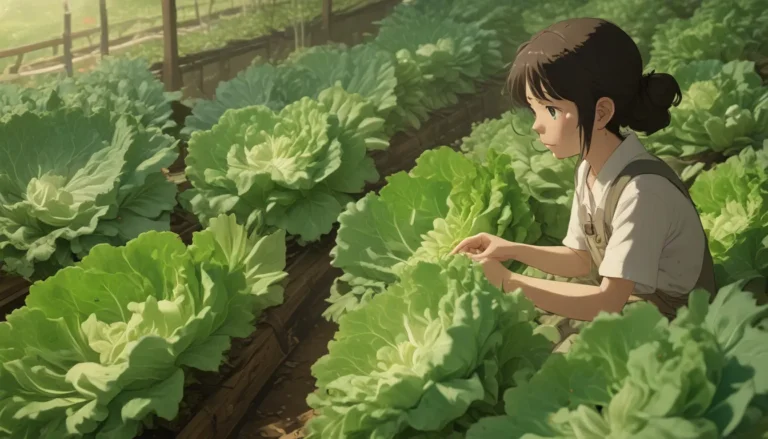The Ultimate Guide to Composting Diseased Plants

Composting is a fascinating practice that combines natural decomposition with cultural benefits. Over time, decomposed material becomes nutrient-rich, feeding other plants in the ecosystem. For centuries, humans have harnessed the power of composting for their own advantage.
But what exactly makes compost healthy? The health of compost can be evaluated based on its ability to break down organic material efficiently. Furthermore, the impact of compost on the health of live plants is another crucial aspect to consider.
Compost is a valuable resource for your garden or small farm, providing essential nutrients and promoting beneficial microbial life in the soil. It also offers numerous advantages for soil health compared to traditional agricultural practices. However, compost can also harbor dormant forms of plant pathogens that can potentially cause disease.
Plant diseases caused by pathogens have been on the rise worldwide due to various factors, including climate fluctuations. In our research lab at The Ohio State University, we focus on studying species of water mold Phytophthora, which produce spores that can survive through winter, making them difficult to eradicate from affected fields.
While some composting methods can help control pathogens by reducing their numbers, others may inadvertently promote their survival. In this article, we will explore common types of plant pathogens and their general symptoms, as well as the impact composting can have on controlling their spread.
Types of Plant Pathogens
- Oomycetes
- Viruses
- Fungi
- Bacteria
Oomycetes
Oomycetes are microorganisms related to algae that can cause mildews, root, stem, and fruit rots in plants. Common oomycetes include Phytophthora, Pseudoperonospora, and Pythium species, affecting a wide range of crop plants globally.
Diseases caused by oomycetes can resemble fungal infections and are often spread through water splashes or soil contact. For example, downy mildews typically result in fuzzy white growth on the underside of leaves. Oospores produced by Phytophthora species can persist in soil for years, potentially surviving in compost as well.
Research has shown that composting can suppress oomycete species, depending on the specific method and temperature conditions. Anaerobic environments created by covering the compost pile have proven effective in controlling pathogens like Phytophthora and Pythium.
Viruses
Plant viruses exhibit distinct symptoms such as mosaic patterns, leaf curling, and stunted growth. Tobacco mosaic virus (TMV) and tomato mosaic virus (ToMV) are common plant viruses that can infect numerous plant species.
Composting infected tissues with certain viruses may not be advisable due to their persistence and potential to spread. However, the composting process, along with irrigation and solarization, can help eliminate viruses like potato virus Y and melon necrotic spot virus.
Fungi
Fungal pathogens can cause a variety of diseases, including leaf spots, fruit rots, powdery mildews, and rusts. While composting can suppress some fungal species, precautions should be taken with infected plant material containing durable overwintering structures.
Methods like anaerobic soil disinfestation and Trichoderma treatment can aid in reducing fungal pathogens in compost. However, it’s essential to monitor for disease recurrence and adjust composting practices accordingly.
Bacteria
Bacterial pathogens invade the intercellular space of plants, causing blights, cankers, galls, rots, and spots. Xanthomonas and Pseudomonas are common bacterial genera that infect a wide range of plants.
Studies have shown that composting can suppress bacterial pathogens like Xanthomonas and Pseudomonas, especially when beneficial microbial communities are present. Integrating biocontrol agents like Trichoderma into compost can further enhance disease suppression.
Quell Pathogens with Your Compost
Pathogens responsible for plant diseases exhibit diverse survival strategies, making it crucial to understand their behavior in compost. While composting can reduce inoculum levels of many pathogens, the effectiveness may vary depending on the species.
Creating an anaerobic environment by covering the compost pile for several weeks can help control pathogens, especially in the summer months. Monitoring disease progression and conducting comparative trials with control plants can provide valuable insights into the efficacy of composting diseased plants.
If persistent diseases continue to affect your plants season after season, it may be necessary to eliminate potential sources of inoculum by disposing of infected plant material and starting anew with non-infected compost materials.
In conclusion, composting diseased plant tissue requires careful consideration of pathogen survival and disease suppression strategies. By incorporating proven methods and monitoring disease progression, you can effectively manage plant diseases in your garden.
Have you ever composted diseased plant tissue? Share your experience in the comments below! For more information on composting and soil health, explore our guides on using eggshells, banana peels, and coffee grounds in the garden.
Legal Disclaimer: The information provided in this article is for educational purposes only. Before composting diseased plant material, consult with a professional plant pathologist or extension office for specific recommendations tailored to your region.





